A daily stretching routine for flexibility is essential for anyone looking to improve their overall range of motion and maintain healthy joints. Flexibility exercises can help reduce muscle stiffness, prevent injuries, and enhance posture, making everyday movements more accessible and fluid. Whether you’re an athlete seeking better performance or simply aiming to stay active, incorporating stretching into your daily routine can lead to significant physical improvements. Over time, consistent stretching can also alleviate muscle tension, allowing for smoother movements and a more comfortable body.
By committing to a daily stretching routine for flexibility, you’ll improve your physical well-being and enjoy long-term health benefits. Regular stretching promotes better blood circulation, increases muscle strength, and enhances coordination, all contributing to a more balanced and agile body. The beauty of a daily routine lies in its simplicity—just a few minutes of stretching can produce lasting effects, helping you move with ease and feel more confident in your physical abilities. Whether new to stretching or looking to refine your practice, this guide will help you create a routine that works for you.
Why Flexibility Matters: The Benefits of a Daily Stretching Routine for a Healthier You

Flexibility isn’t just about touching your toes or doing splits; a daily stretching routine for flexibility is crucial to your overall health. It impacts not only your physical performance but also your day-to-day activities. Being flexible helps prevent injuries, improves your posture, and even aids your muscular coordination.
You’ll learn about the myriad benefits of adding a daily stretching routine. When your muscles are limber, and your joints have a full range of motion, you move more efficiently and feel less pain. That isn’t just beneficial for athletes; it’s vital for everyone, whether carrying groceries, playing with your kids, or sitting at a desk.
This isn’t just about stretching; it’s also about incorporating a routine that nurtures your body consistently. Think of a stretching routine as an investment in your body that pays off by keeping your muscles and tendons healthy and functioning as they should. So, if you want to maintain your flexibility as a part of your wellness plan, stick around as I walk you through how to prepare for your following stretching routine.
Key Takeaways
- Regular stretching helps improve range of motion, maintain joint health, and prevent injuries, making daily practice essential for long-term flexibility.
- Preparing muscles with a light warm-up before stretching increases blood flow, improves flexibility, and reduces the risk of injury.
- Each stretch should be held for 20 to 30 seconds to allow muscles to relax and lengthen without strain, ensuring safe and effective stretching.
- A well-rounded routine includes upper and lower body stretches, targeting major muscle groups to ensure comprehensive flexibility improvements.
- Improved flexibility leads to smoother movement, better posture, and easier completion of everyday tasks, enhancing overall well-being.
Preparation for Your Stretching Routine
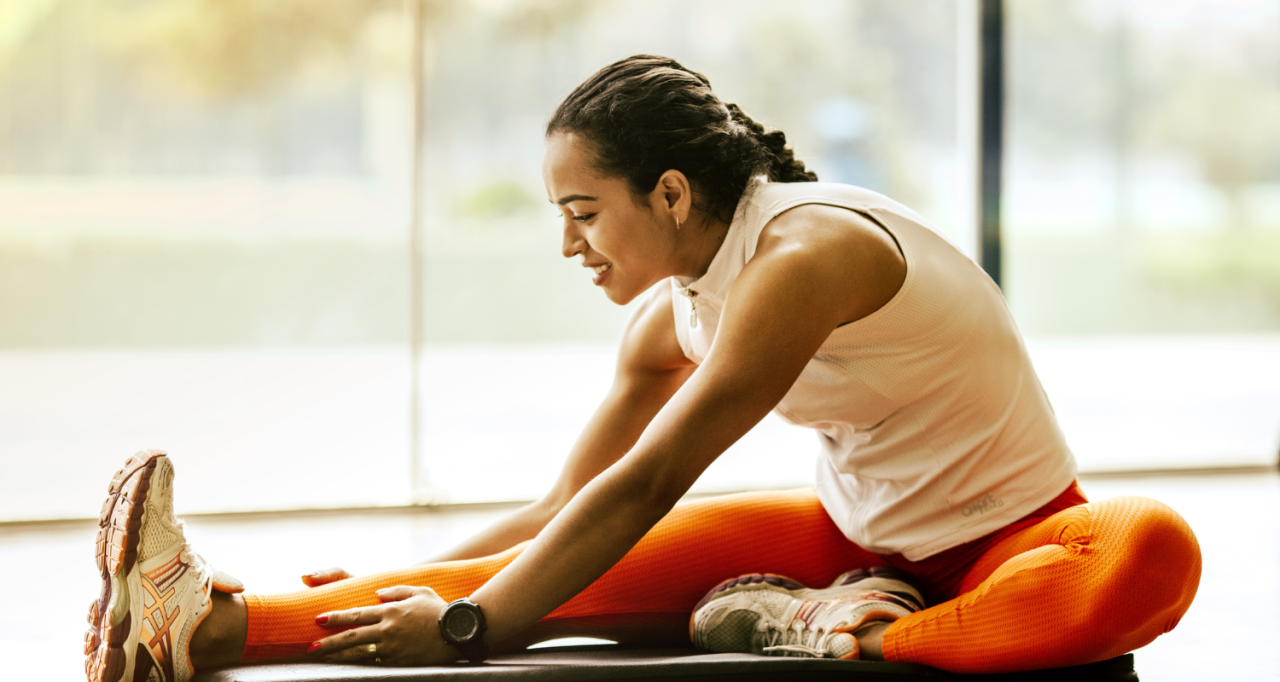
I’m here to help you set the stage for a successful daily stretching routine for flexibility. It’s not just about bending and twisting; it’s also about creating the right conditions for your body to adapt and grow more flexible. So, where do you begin?
First up, setting flexibility goals is akin to choosing a destination before you start a journey. It gives you direction and something to strive for. If you’re just starting out, this could be as simple as touching your toes without bending your knees or completing a full yoga sequence with ease. Remember, you’re aiming for steady improvement, not overnight success.
Creating Your Stretching Space
Now, let’s talk about your stretching environment. Choose a space that’s quiet, uncluttered, and has enough room for you to move freely. Whether it’s a spot in your living room or a dedicated room for exercise, ensuring comfort and minimal distractions is crucial. This isn’t just about physical space but also about making time. Carve out a regular slot in your daily routine to ensure consistency.
Stretching Safely and Effectively
You’ll want to remember some basic tips before diving into stretching. Make sure you’re wearing comfortable clothing that doesn’t restrict movement. Have a water bottle on hand to stay hydrated. Consider using props like a yoga mat, foam blocks, or a strap to support your stretches. And, of course, if you have any health concerns, consult with a healthcare professional before starting any new exercise routine.
As you finish prepping, it’s important to remember that stretching should never be painful. You’re aiming for a gentle pull, not a harsh tug. It’s about listening to your body and respecting its limits. With these points in mind, you’re ready to warm up your muscles and stretch toward greater flexibility.
Warm-Up Moves to Begin Your Stretching Routine
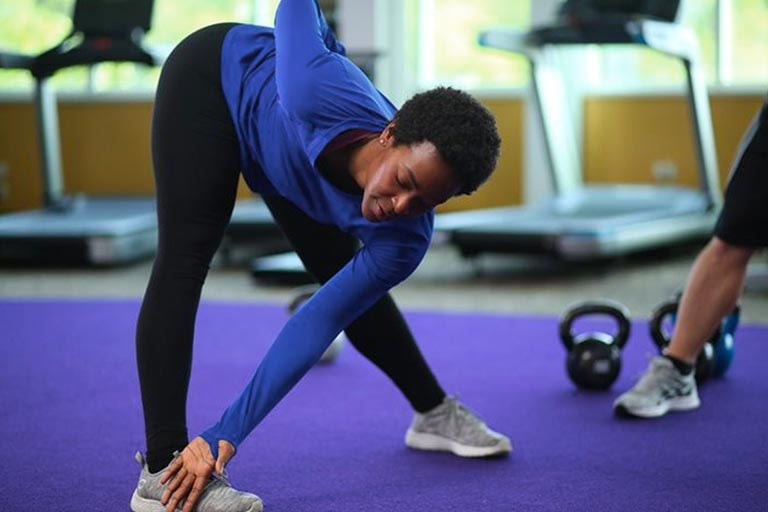
I’m going to let you in on a little secret: warming up is just as vital as the stretching itself. It prepares your muscles and joints for the stretches, helping to ensure that you can perform them effectively and without injury. When it comes to a daily stretching routine for flexibility, warming up is like priming a wall before you paint; you lay the groundwork for the best final result.
Pre-Stretch Warm-Up Essentials
Now, the goal of a good warm-up is to increase blood flow and raise the temperature of your muscles. When muscles are warm, they become more pliable, which is exactly what you want before engaging in stretching exercises. Think of it as setting the stage for a performance – in this case, the show is your flexibility workout.
Effective Warm-Up Exercises
You’re going to find out about some simple but effective warm-up exercises. These include light jogging on the spot, arm circles, leg swings, or dynamic stretches such as walking lunges. Remember, the idea is to move gently and gradually increase the intensity; let your body tell you when it’s ready to go from warm-up to full-on stretching.
And to ensure we’re on track, here’s how to gauge when your body is prepped: you should feel a slight increase in your heart rate and a bit of warmth throughout your body. Sweating is not the aim here, so if you are out of breath, slow down. It’s about waking your body up, not wearing it out.
Key Daily Stretches for Improved Flexibility
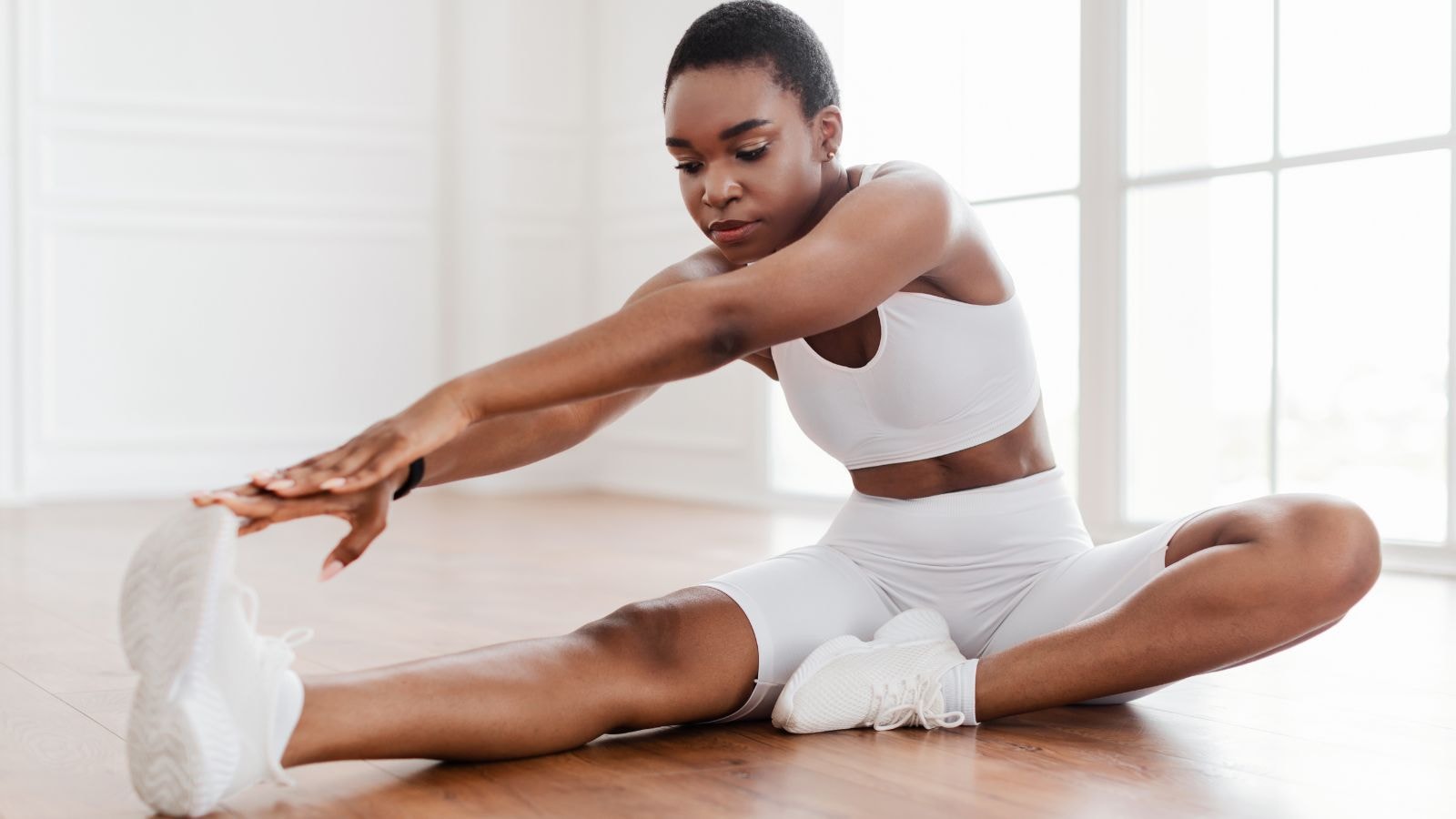
Specific stretches should become non-negotiable in your daily stretching routine for flexibility if you want to see real progress in your flexibility. I’m going to break down some key stretches that, when done regularly, can significantly improve your flexibility and range of motion.
Hamstring Stretch
First up, we have the hamstring stretch. You’ll find out why targeting your hamstrings is crucial for lower back health and overall mobility. Follow along: sit on the ground, extend one leg out, and tuck the other foot into your thigh, then gently lean forward from your hips over the extended leg. Hold for 30 seconds and switch sides.
Quadriceps Stretch
Next is the quadriceps stretch, which aids in knee health and flexibility. Stand on one leg (use a wall for support if needed), grab your other ankle, and pull it gently towards your glutes, keeping your knees together and your spine neutral. Hold this for 30 seconds as well, and don’t forget to breathe steadily.
Upper Body Stretch
Don’t overlook the importance of your upper body. A great stretch for your shoulders and chest is the doorway stretch. Stand in a doorway, place your forearms on the door frame at shoulder height, and step through until you feel a gentle stretch. It’s a fantastic way to counteract the hunched posture many of us develop from desk jobs.
Relieve Hip Tightness
The hip flexor stretch is a godsend for those who spend a lot of time sitting. Kneel on one knee, the other foot in front, in a lunge position. Push your hips forward until you feel a stretch in the front of your kneeling hip. This one helps in warding off hip tightness and improving posture.
To wrap this section up, remember that flexibility is about balance. Your daily routine should include stretches for both the front and back of your body and upper and lower sections. Routine is the key here – choose something that resonates with you and stick to it!
Did You Know?
Each stretch should be held for 20 to 30 seconds for maximum effectiveness. This duration allows the muscles to relax and lengthen gradually, which is essential for improving flexibility without causing strain.
Watch this video on 8 essential stretches to incorporate into your daily routine for improved flexibility.
By: Tone and Tighten
Tips to Enhance Stretching Effectiveness

When it comes to stretching, doing it right matters just as much as doing it regularly. I will share some tips that will help you get the most out of your daily stretching routine for flexibility and see tangible improvements in flexibility.
Master Your Breathing Technique
First things first: focus on your breathing. Breath is like the silent partner in your stretching routine; it helps you release tension and deepen each stretch. Inhale deeply through your nose as you prepare for a stretch, and exhale slowly through your mouth as you move into it. This isn’t just about getting more limber; it’s about creating a rhythm your body can sync.
Mindfulness in Stretching
Mindfulness is another key player. I’m here to tell you that being present during your stretching routine can make a difference. Pay attention to how each stretch feels, notice the muscles you’re engaging in, and don’t rush your body through the motions. By being mindful, you can enhance your body’s response to each stretch, ensuring you’re doing them correctly and effectively.
Adaptability
Let’s not forget about adaptability. You can always adjust your approach down the road if you find certain stretches are too easy or too difficult. Choose something that resonates with you. Modify stretches to match your current level of flexibility—use props like straps, blocks, or even a chair to help you maintain proper form and get the most out of each movement.
To close off, I’m going to talk about consistency. Unlike a high-intensity workout, stretching won’t leave you breathless or drenched in sweat, but that doesn’t mean you can’t track your progress. Regularly revisiting the same stretches will allow you to watch your flexibility improve over time. A little progress each day adds up to big results, and that’s something to be excited about.
Common Mistakes to Avoid in Your Stretching Routine
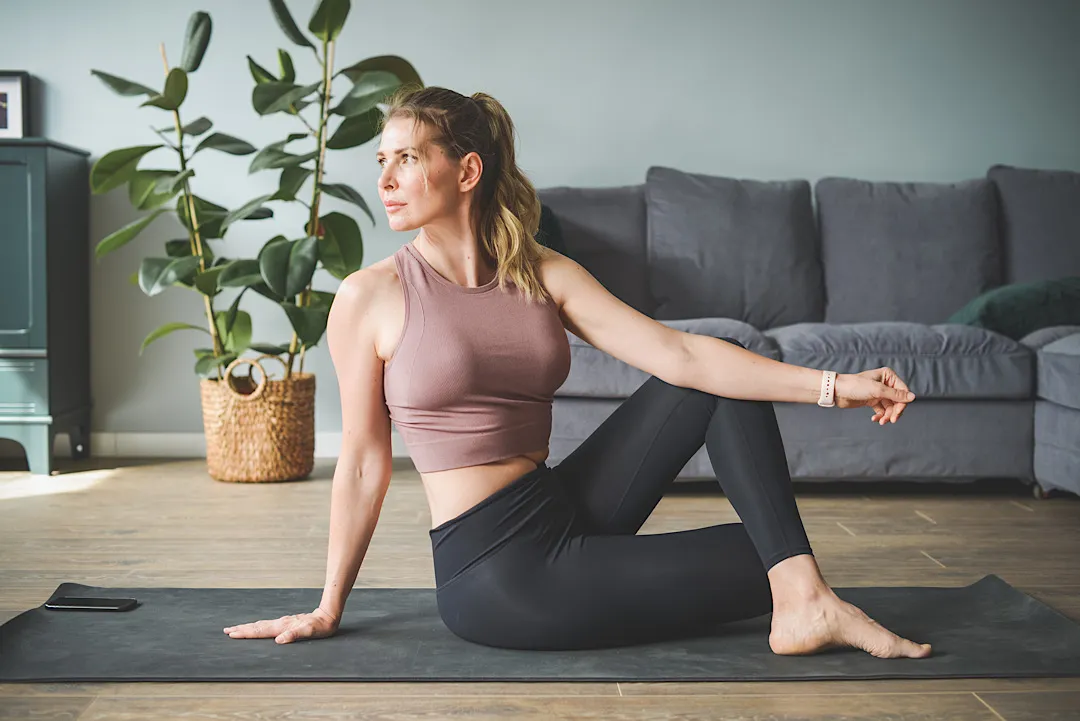
If you’re serious about improving your flexibility, avoiding common pitfalls in your daily stretching routine for flexibility can save you from disappointment and injury. Here are some of the missteps I see all too often:
- First off, don’t rush. Stretching isn’t a race. Take your time to ease into each stretch, holding it for at least 20 to 30 seconds for maximum benefit.
- Another one to watch out for is improper form. Incorrect technique can do more harm than good, so focus on aligning your body correctly. Remember, quality over quantity.
- Don’t bounce during your stretches. This mistake, known as ballistic stretching, can lead to muscle tears. Instead, adopt a static stretch where you hold still at the point of mild discomfort.
- Steering clear of these mistakes will not only keep you safe but also ensure you’re on the right track to becoming more supple and flexible. As you continue your routine, remember that small, daily changes can make a big impact over time.
Maintaining Flexibility: Daily Practices and Lifestyle Changes
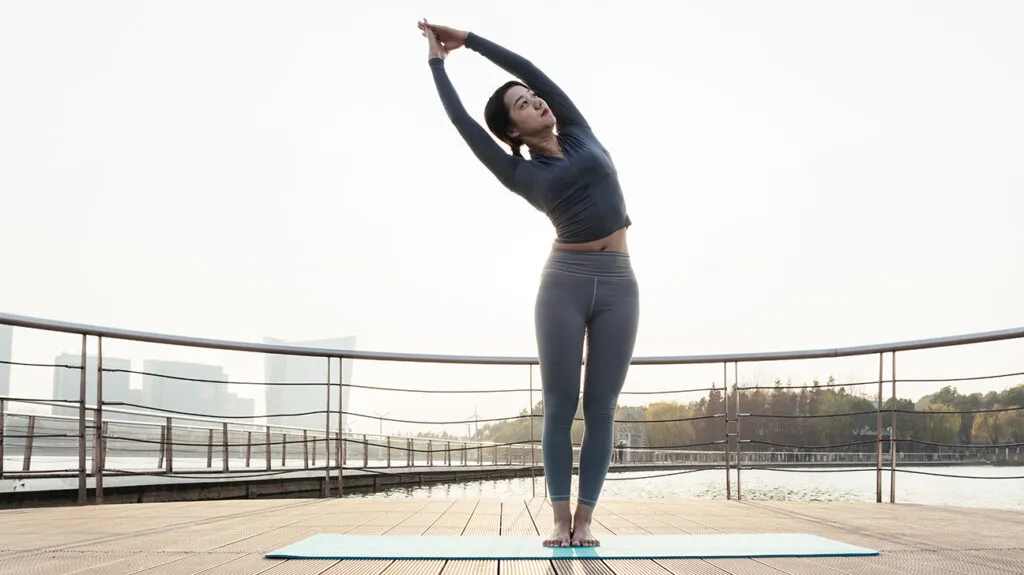
You’ve got a solid understanding of how to structure your daily stretching routine for flexibility. But remember, the journey toward improved flexibility doesn’t end when you roll up your yoga mat. What you do outside of your stretching sessions can be just as crucial.
Integrating Daily Stretches
Incorporate stretches into your daily activities. Whether it’s reaching up to grab something high or bending down to tie your shoes, make these moments an opportunity to stretch.
Adding other flexibility-supporting habits to your lifestyle can make a significant difference. Activities such as swimming, yoga, or Pilates not only improve flexibility but also build strength and improve your overall physical condition.
Hydration and Recovery Essentials
Hydration and nutrition play key roles in muscle health. Ensure you’re drinking plenty of water and consuming a diet rich in nutrients that support muscle recovery and elasticity.
Listen to your body and give it the rest it needs. Recovery is a part of the training process, and allowing your muscles to rest is essential for the improvement and prevention of injuries.
I really hope that this article leaves you empowered with the knowledge to not only start your flexibility journey but also to continue it with confidence. Depending on your lifestyle, you may need to adjust your approach down the road, and that’s perfectly okay. Choose something that resonates with you, enjoy the process, and watch as flexibility becomes integral to your life.
Watch this video on a 12-Minute Daily Full Body Stretch designed to relieve tight muscles, improve mobility, and enhance flexibility.
By: MadFit
Embracing Flexibility: How a Daily Stretching Routine Transforms Your Well-Being
Embracing a daily stretching routine for flexibility offers numerous benefits beyond improved range of motion. By consistently incorporating stretching into your daily life, you’ll move more effortlessly and feel less muscle tension. This commitment not only enhances your physical performance but also contributes to better posture, reduced injury risk, and overall well-being. Flexibility exercises help your muscles stay limber, and your joints remain healthy, making every activity—from playing sports to daily chores—more enjoyable and less strenuous. Additionally, a flexible body can adapt better to various physical demands, making routine tasks easier and more comfortable.
Remember, maintaining flexibility is a lifelong journey, not a destination. Alongside your stretching routine, integrating supportive practices like proper hydration, balanced nutrition, and adequate rest will further bolster your flexibility goals. By creating a stretching routine that fits seamlessly into your daily schedule, you’re investing in a healthier, more agile future. Stay consistent, listen to your body, and appreciate the gradual progress you make. With dedication and the right approach, flexibility will become a natural part of your wellness routine, enriching your life and enhancing your physical capabilities. Embrace this journey with patience and enthusiasm, and you’ll reap the rewards of a more vibrant and flexible life.
Frequently Asked Questions
How Often Should I Stretch to Improve Flexibility?
A daily stretching routine is ideal for improving flexibility. Consistency is key, as regular stretching helps maintain muscle elasticity and joint mobility over time.
What Are the Benefits of a Daily Stretching Routine for Flexibility?
Stretching daily enhances range of motion, reduces muscle stiffness, improves posture, and decreases injury risk. It also promotes better blood circulation and coordination, contributing to overall well-being.
Is It Necessary to Warm Up Before Stretching?
Yes, warming up before stretching is essential to increase blood flow to the muscles, making them more pliable and reducing the risk of injury. Light cardio, such as jogging in place, is a good warm-up option.
Can Stretching Help Prevent Injuries?
Yes, regular stretching can prevent injuries by keeping muscles limber and joints mobile. This reduces muscle tightness and improves body mechanics, which helps avoid strains and sprains during physical activities.
What Should I Avoid When Stretching to Prevent Injury?
Avoid bouncing or jerky movements (known as ballistic stretching), as these can cause muscle tears. Instead, focus on slow, controlled static stretches and listen to your body to avoid overstretching.
Join Us and Embrace a Healthier Lifestyle!
Become part of the Fit After 55 Community and take charge of your well-being!
Explore our website here for expert advice, helpful tips, and reviews designed specifically for seniors. Connect with like-minded individuals in our encouraging health and fitness community on Facebook page. Together, let’s begin this fitness journey and show that age has no limits!
Join the Fit After 55 Community! and get inspired to stay active.

